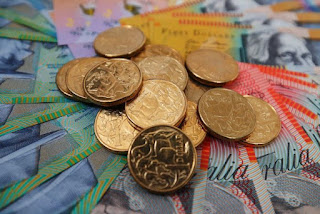Tuesday, the Australian dollar has returned to its lowest levels since early January after the country's central bank had announced a further rate cut, while the pound sterling was held back by rising concerns about a Brexit without a transaction.
With markets focused on meetings of the US Federal Reserve and the Bank of Japan later in the week, traders took advantage of minutes from the June meeting of the Reserve Bank of Australia (RBA), which showed that policymakers were willing to lower rates to boost wage growth and inflation.
The market is already considering two interest rate cuts (in Australia), and speculative measures have been taken to bring down the Australian dollar," said Yukio Ishizuki, currency strategist at Daiwa Securities.
The minutes of the RBA has dropped the Australian $ 0.6833, its lowest since the flash crash in early January. Last time it was $ 0.6837.
Markets expect about 50% chance of a further rate cut next month by the RBA, which made its first easing in nearly three years just two weeks ago.
The pound was under pressure after former Foreign Minister Boris Johnson received a boost Monday in his campaign to become Prime Minister, one of his former rivals and EU supporter Matt Hancock, supported him.
Read: How To Choose A Trusted Forex Broker?
This has shaken the markets since Johnson, faced with the official exit campaign of the European Union in the 2016 referendum, promised to get Britain out of the European Union with or without agreement.
The pound, which fell to $ 1.2532 on Monday, its lowest level in five and a half months, traded at $ 1.2530. It also fell to its lowest level since January against the euro, which climbed to 89.74 pence, compared to a two-year low of 84.56 touched just over a month earlier.
The pound sterling is likely to be battered in the coming days, with many events likely to change the markets, including consumer inflation and retail sales, expected Wednesday and Thursday, and the announcement of the policy of the Bank of England on Thursday.
The dollar dipped slightly to 108.23 yen on Tuesday, while a drop in Japanese equities provoked risk aversion.
The yen may have a bit more leeway if US equities attack and provoke a wave of risk aversion," said Ishizuki of Daiwa Securities.
The dollar index measuring its value against the six major currencies also fell slightly, to 97.446, weakened by the New York Fed's corporate index, which this month broke a record to reach its highest level. weaker for more than two and a half years.
The Fed's two-day monetary policy meeting, which will begin later on Tuesday, is the next major goal after markets have anticipated more than two 25 basis point rate cuts by the end of the year .
This contrasts sharply with the Fed's official March forecast that politicians have estimated that the next decision would be a rise.
"As markets now expect rate cuts in the second half of this year, the question is how the Fed will react to such prospects," said Shinichiro Kadota, chief strategist at Barclays.
The euro has changed little in Asia, trading at $ 1.1231.



No comments:
Post a Comment